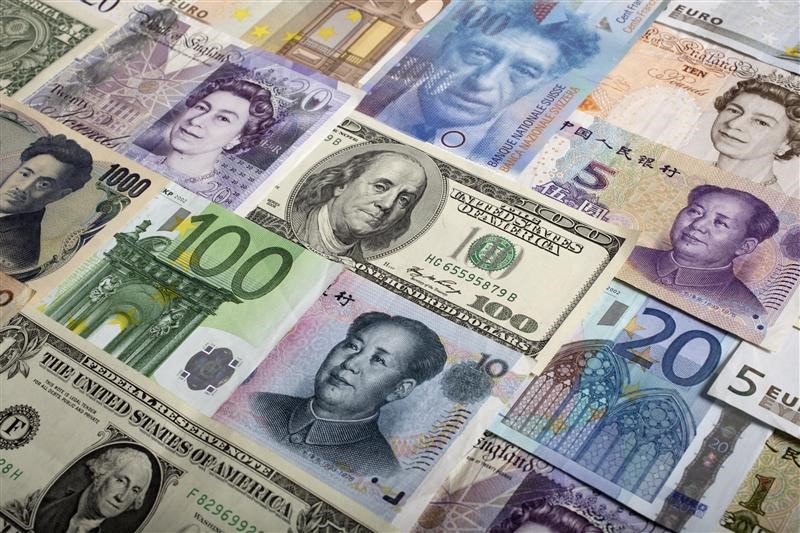* Graphic: World FX rates in 2019 http://tmsnrt.rs/2egbfVh
By Saikat Chatterjee
LONDON, July 12 (Reuters) - The dollar fell for a third
consecutive day on Friday as stronger-than-expected U.S.
inflation data failed to shake convictions that the Federal
Reserve will start cutting interest rates at a policy meeting
later this month.
Against a basket of other currencies .DXY , the dollar fell
0.1% to 96.94 and was on track for its biggest weekly drop in
three weeks.
The core U.S. consumer price index, excluding food and
energy, rose 0.3% in June, the largest increase since January
2018, data on Thursday showed. The reading pushed U.S. Treasury yields higher, but money
markets still indicated one rate cut at the end of July and a
cumulative 64 basis points in cuts by the end of 2019.
"Cutting interest rates when inflation data is weakening
makes sense, but signalling a dovish stance when inflation is
rising is a bit weird and suggests there are political pressures
weighing on the Fed," said Ulrich Leuchtmann, the head of
currency research at Commerzbank.
The dollar's weakness revived carry trades, where hedge
funds borrow in low-yielding currencies such as the Swiss franc
and the euro to purchase higher-yielding ones such as the
Australian or New Zealand dollars.
On Friday, the NZ dollar NZD= gained 0.3% to $0.6665.
POLICY DIVERGENCES
Other currencies which benefited from a weaker dollar were
in markets whose central banks signalled a relatively confident
outlook to interest rates.
The Canadian dollar CAD= was one such beneficiary: the
loonie rallied to a 10-month high versus the U.S. dollar after
Canada's central bank said this week it had no intention of
easing monetary policy even as it highlighted the risks that
trade wars posed to the global economy.
Higher oil prices also helped the Canadian dollar.
Sweden's crown SEK= also benefited from a relatively
optimistic assessment of its economic outlook after minutes of
the central bank's policy meeting. The euro trimmed earlier gains after European Central Bank
Governing Council member Ignazio Visco said on Friday the ECB
will need to adopt further expansionary measures if the euro
zone economy does not pick up and will consider its options "in
the coming weeks". The single currency EUR=EBS was flat at $1.1258, below an
intraday high of $1.1275 in early London trading.
Market attention will be focused on comments by Chicago Fed
President Charles Evans later on Friday and New York Fed
President John Williams on Monday which will provide a chance to
gauge how dovish the U.S. central bank will be.
"If these Fed officials are not as dovish as (Federal
Reserve Chair Jerome) Powell, and if the New York Fed's
manufacturing survey on Monday proves stronger than forecast,
they could show that the dollar weakening in response to
Powell's congressional testimony was overdone," said Masafumi
Yamamoto, chief forex strategist at Mizuho Securities.
Powell indicated again on Thursday that an interest rate cut
from the U.S. central bank is likely at its next meeting later
this month as businesses slow investment due to trade disputes
and a global growth slowdown. <^^^^^^^^^^^^^^^^^^^^^^^^^^^^^^^^^^^^^^^^^^^^^^^^^^^^^^^^^^^
US real interest rates and DXY https://tmsnrt.rs/32niorZ
^^^^^^^^^^^^^^^^^^^^^^^^^^^^^^^^^^^^^^^^^^^^^^^^^^^^^^^^^^^>
